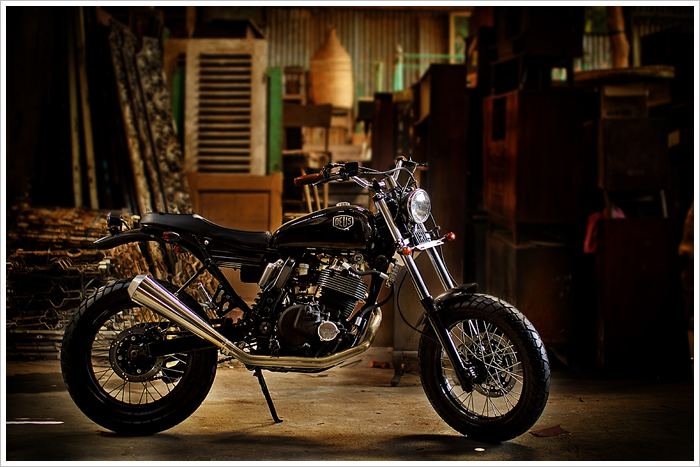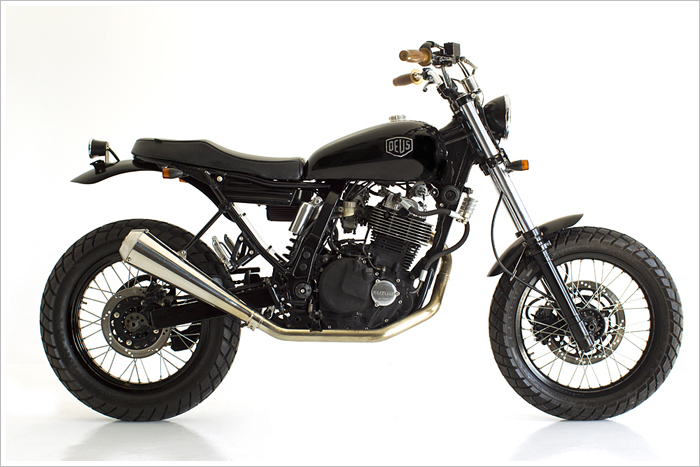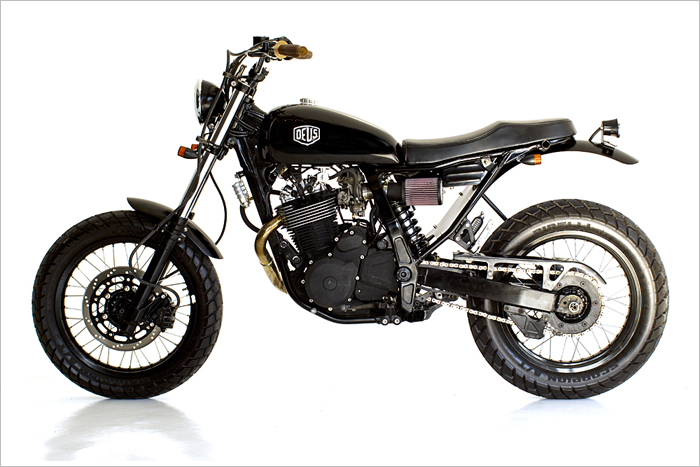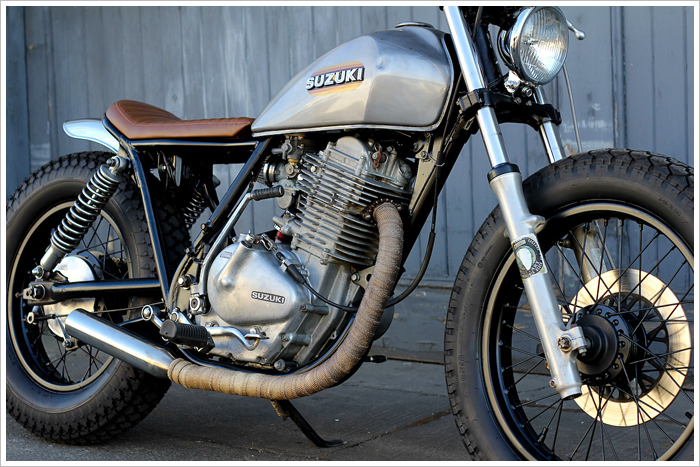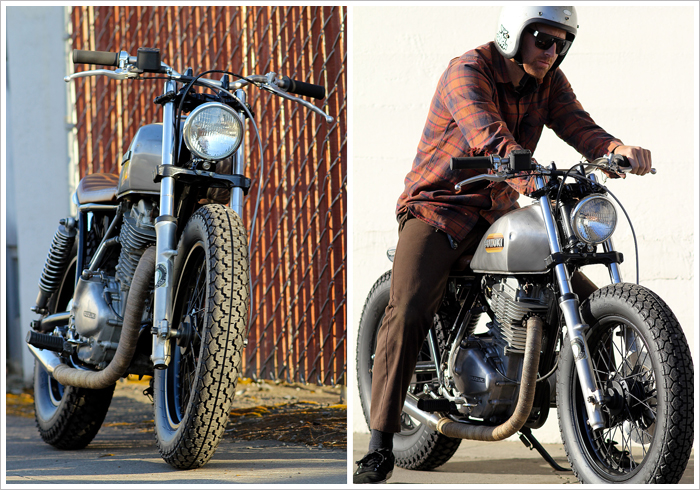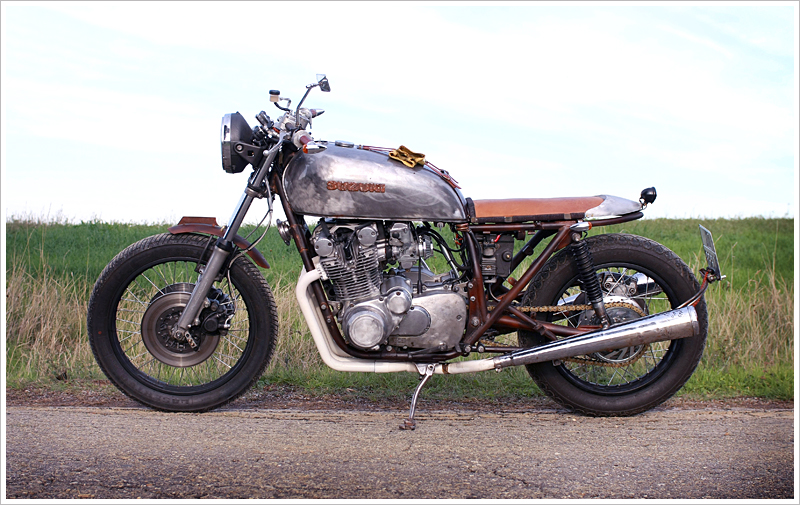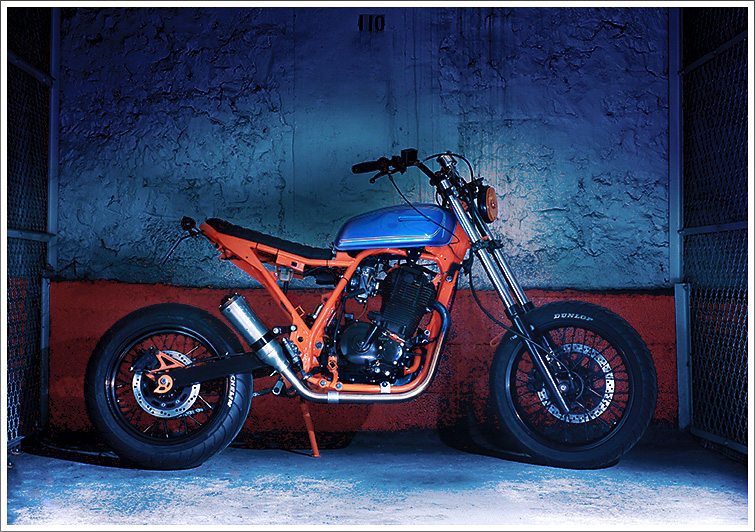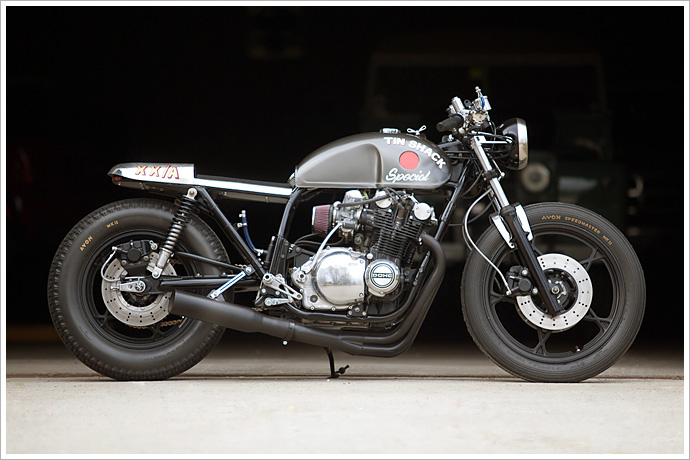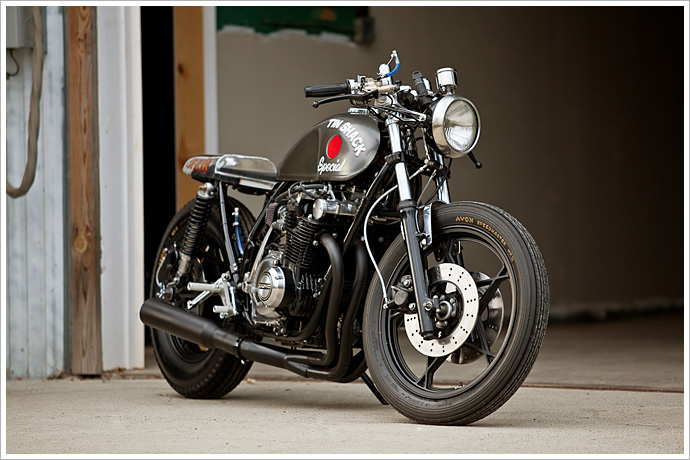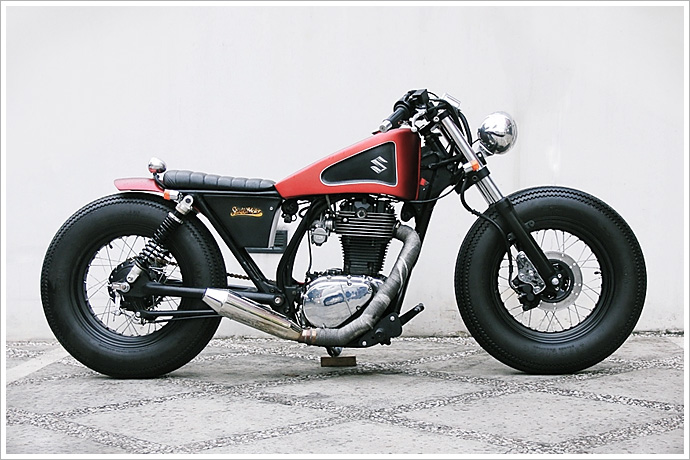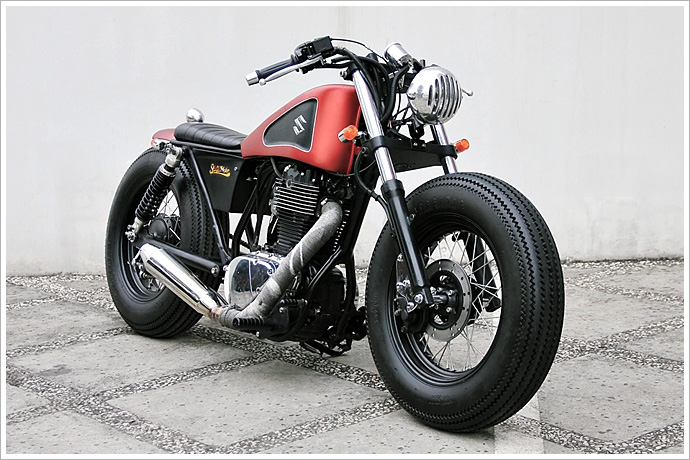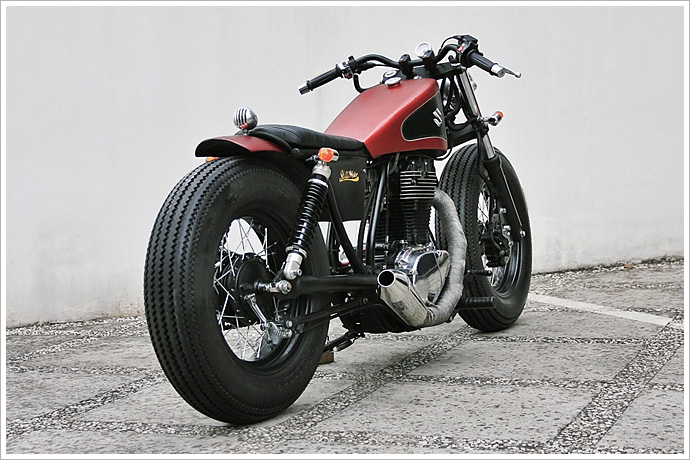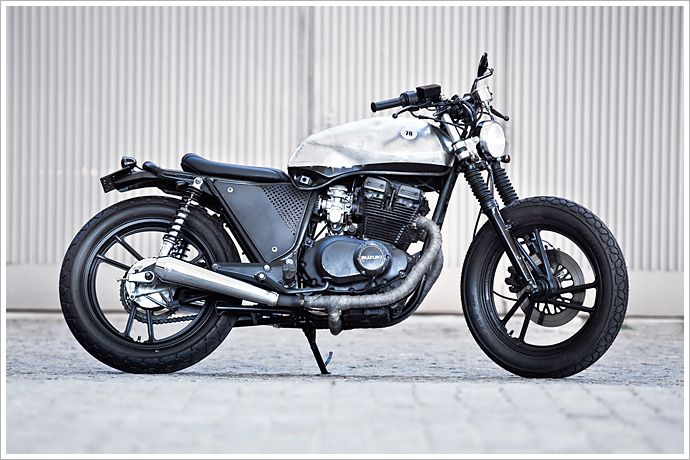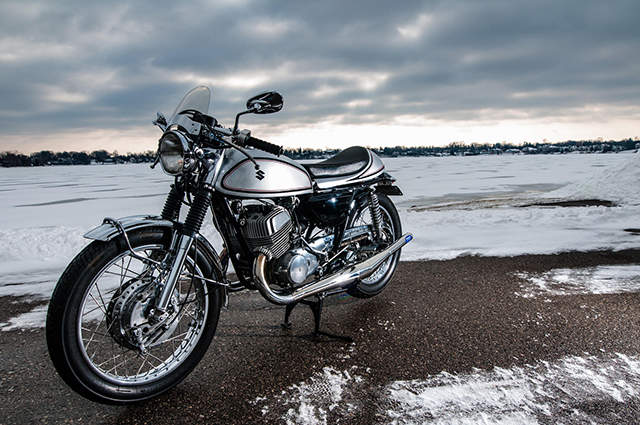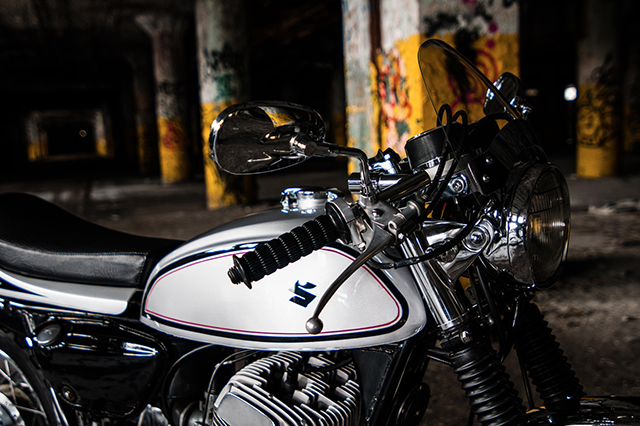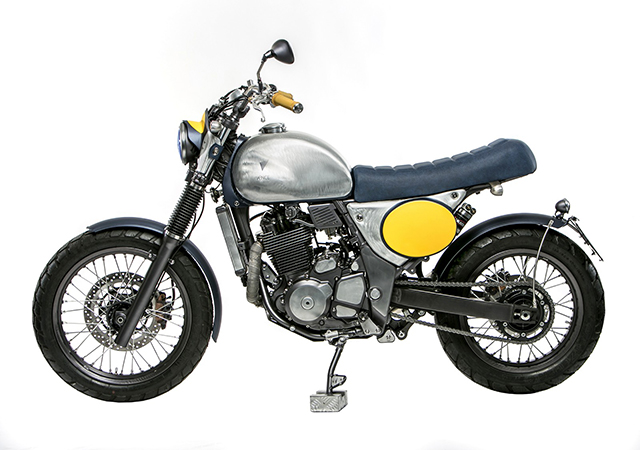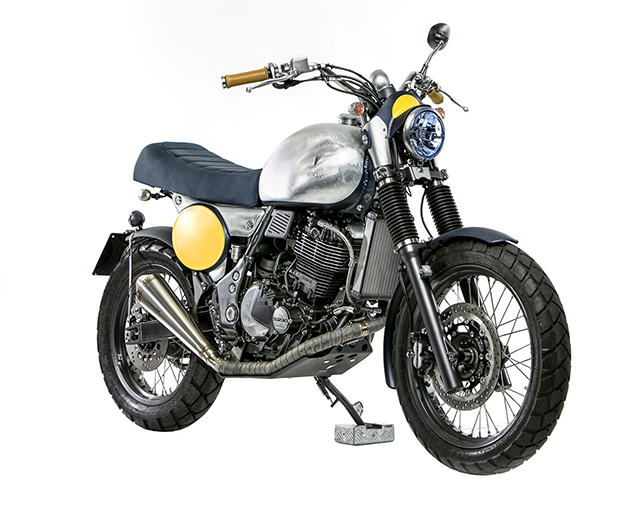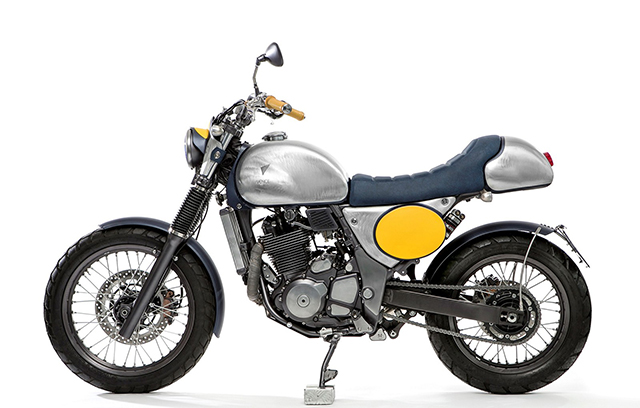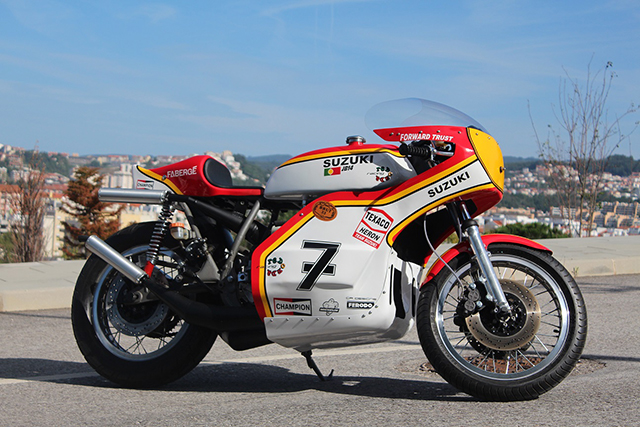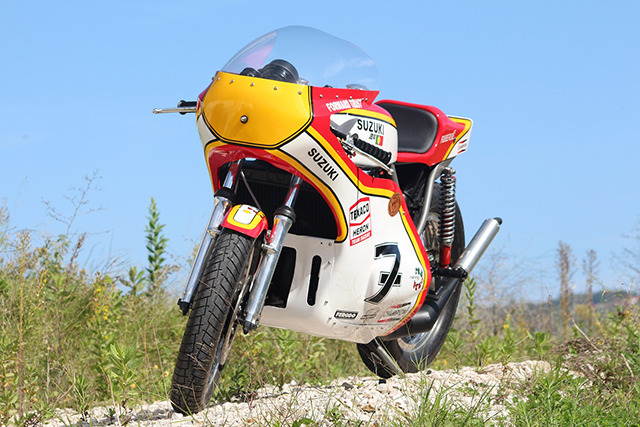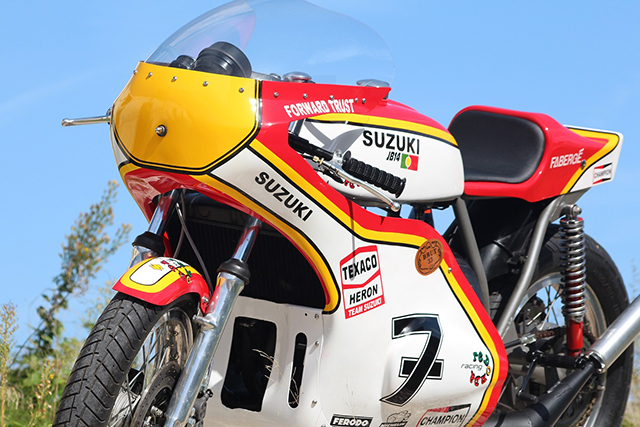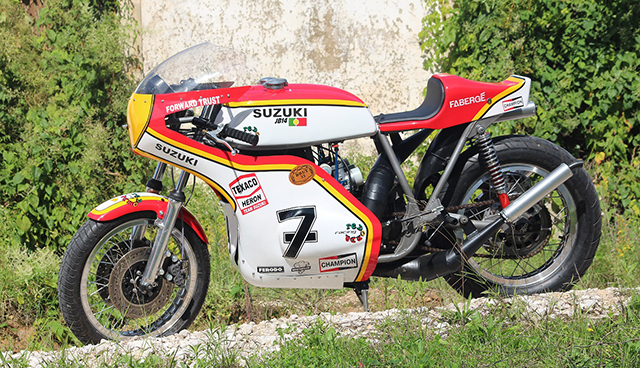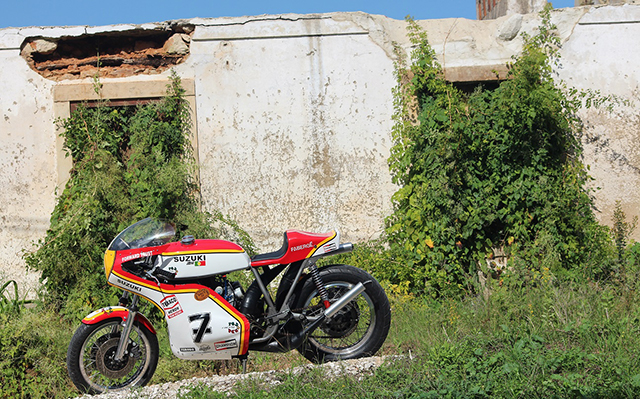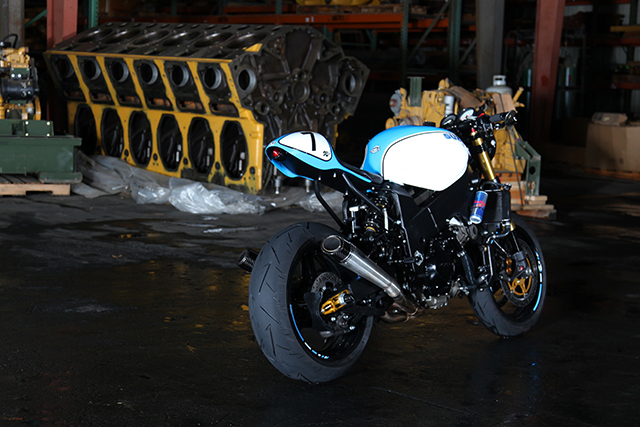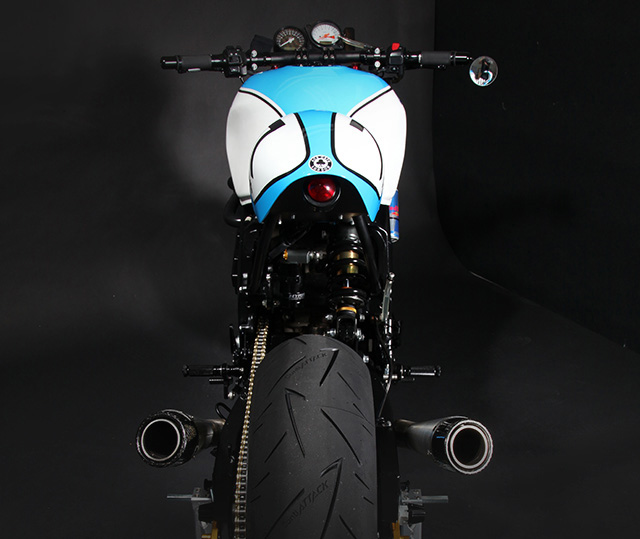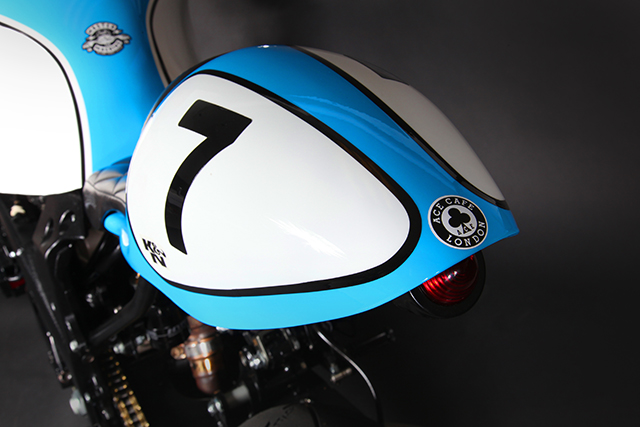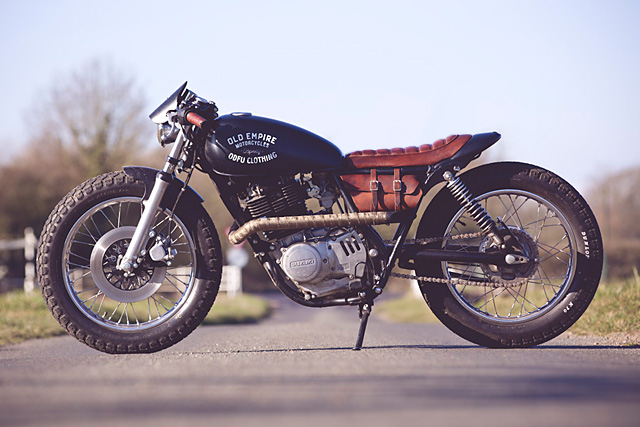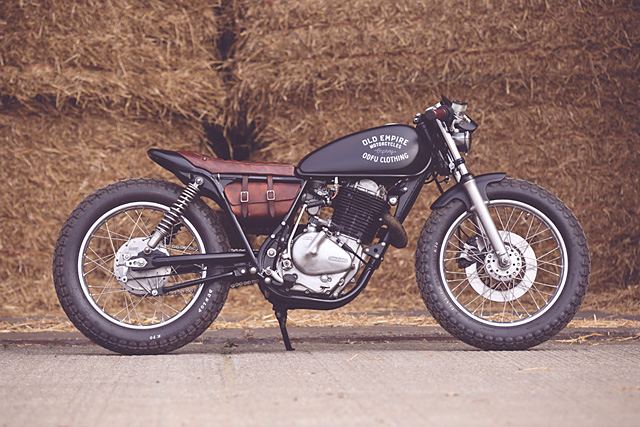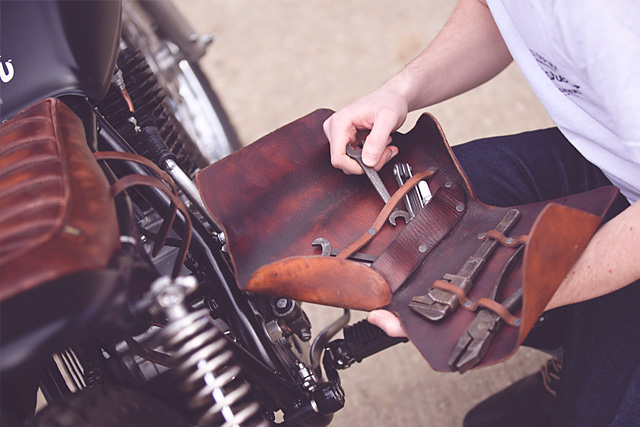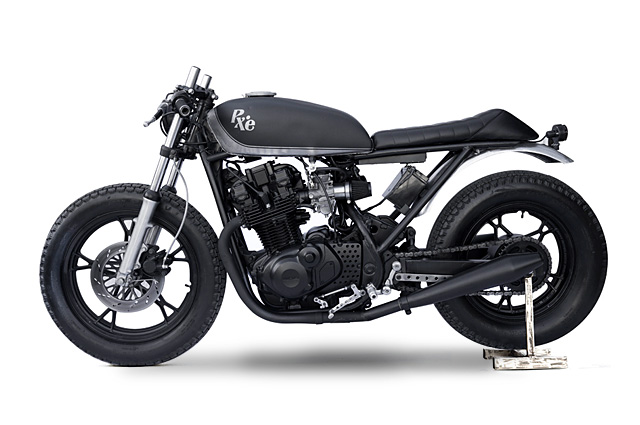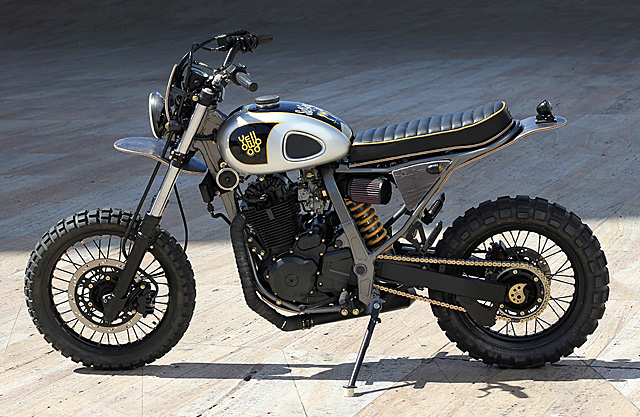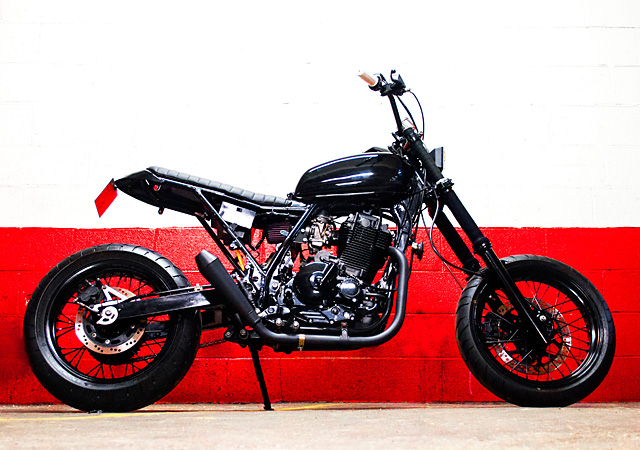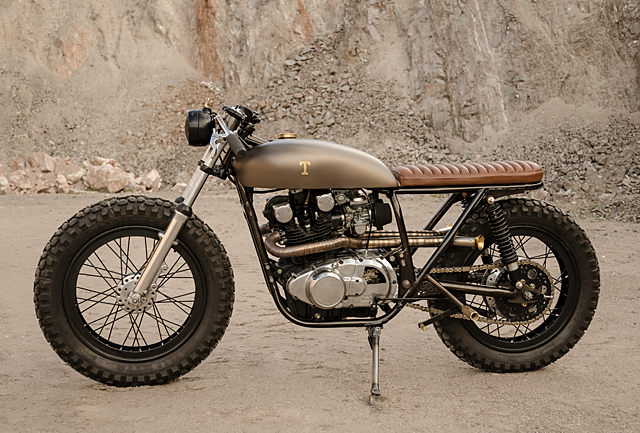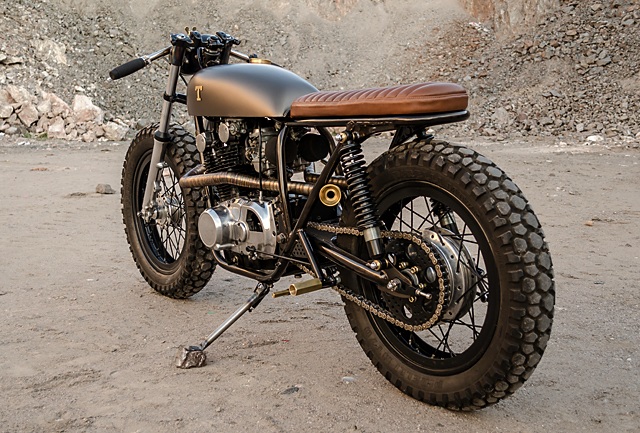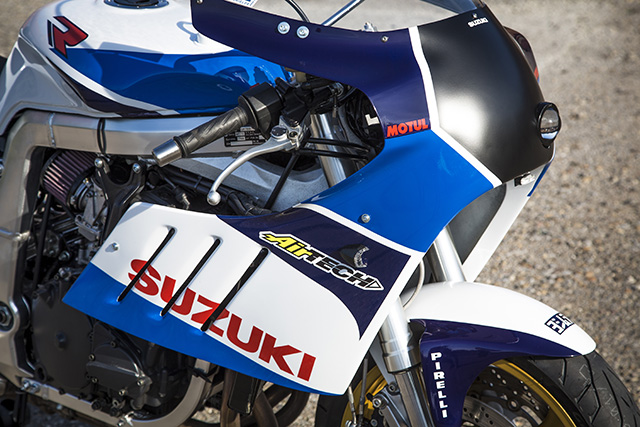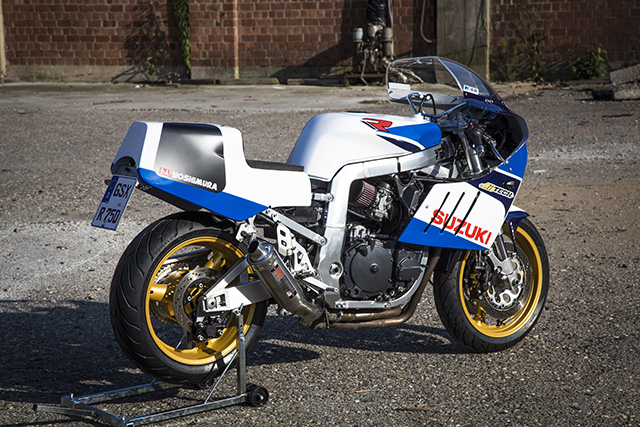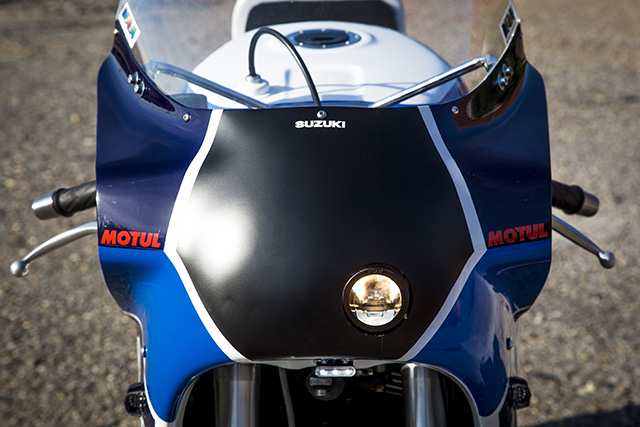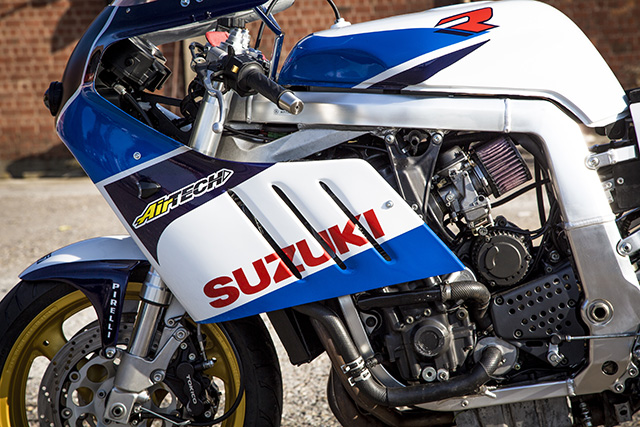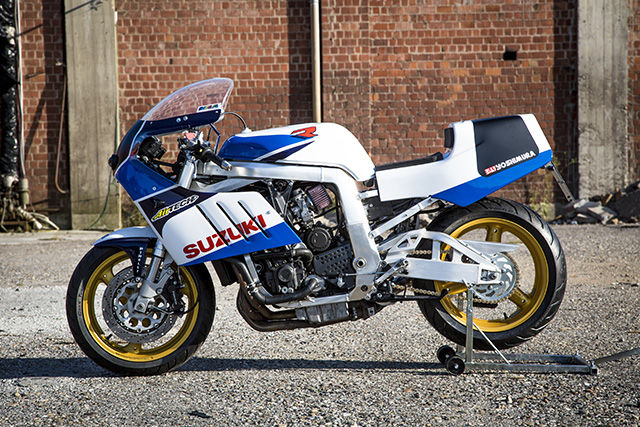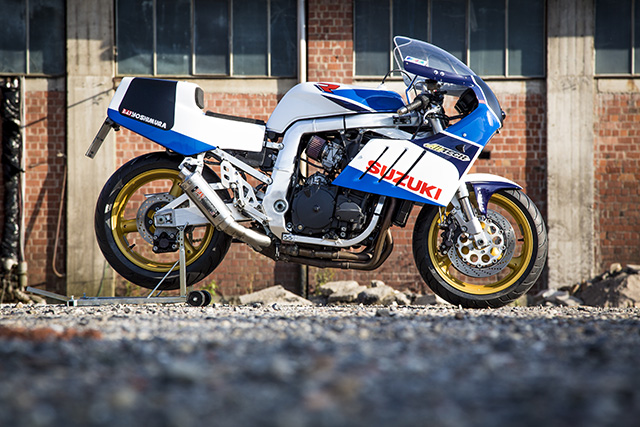
If you took yr average 1950s cafe racer and ground it up in a giant sausage maker, what do you think would come out the other end? For those of you who answered a ‘bunch of ground metal with small pieces of rubber, vinyl and glass, all coated in a nice oily sauce,’ then technically you’d be right. Smart arses. But what I was alluding to was more of a distillation of the bike’s Raison d’être in to something pure and unadulterated. In a traditional cafe racer’s case, I’m guessing that what you’d get is a kind of ‘essence of honest speed.’ A substance that would characterise the scene’s key traits of going as fast as bloody possible on a working-class, post-war English budget. Think those days are long gone? Think again, for as the GFC bites hard in Western Europe, there are still guys who want maximum bang-for-their-buck for as little buck as possible, and what they are coming up with still stirs the soul like their 50 year-old brethren. Here’s one of them; Sérgio Teixeria’s Suzuki GSX 750 cafe racer.
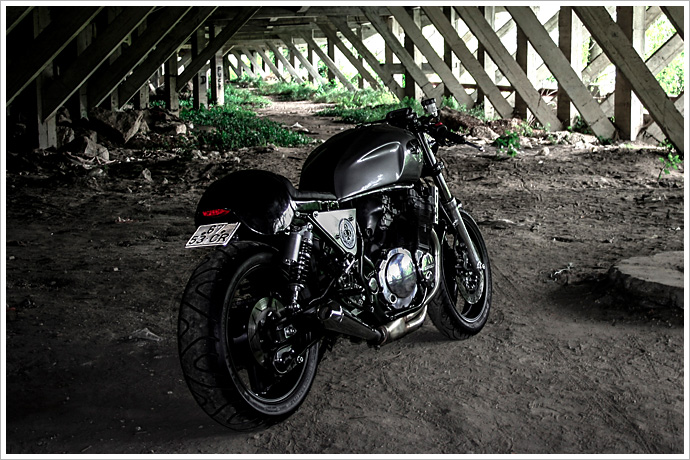
Here’s Sergio. “Saudade! It’s a Portuguese word… some say it’s the only word in all languages of the world that defines the feeling of missing someone or something! I can’t think of a better word for this bike. It was a wrecked Suzuki GSX 750 when I (Sérgio ‘Thunderbird’ Teixeira, an active member of the Portuguese forum Cafe Racer 351) bought it. After 10 months of work, Saudade was born.”
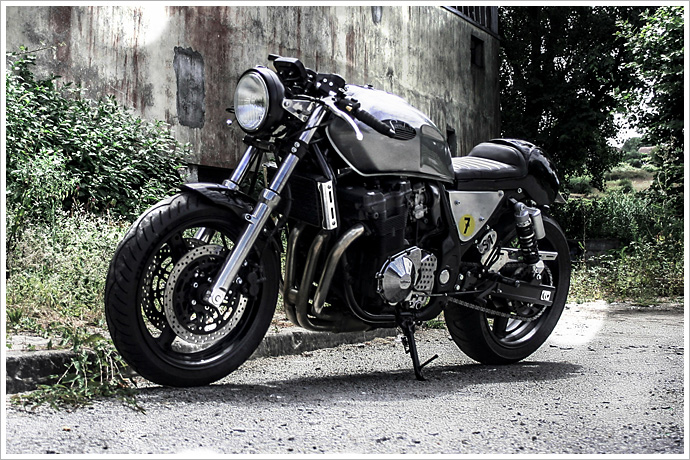
“Why Saudade? My goal was to create a motorcycle to honour my late grandfather. I thought of making a muscle bike, a scary bike, and I think I pretty much did it!”

“The tank is from a Yamaha XJR1200 with a racing cap. For the instrumentation, I chose an Acewell Computer. Rear sets, clip on’s, new shock absorbers, polished motor covers, bicycle tape instead of normal grips, custom aluminium side panels and a Megatron exhaust… she sounds great! She sounds scary! And it’s awesome to ride!”
“I only had a small budget for the build. The recession is bad, and I couldn’t afford to buy top notch items! But it still is a head turn bike!”
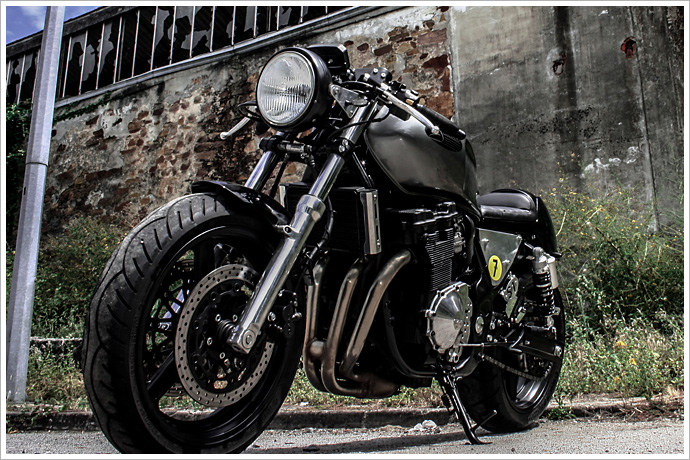
“All of my life has been related with motorcycles. My father is a mechanic for over 40 years. He taught me everything I know about motorcycles. He made me a motorcycle when I was 4 years old and everything started there… the smell, the feeling of the wind in my face! It was love at the first throttle! I knew that motorcycles will be my life!”

“Nowadays, I spend my days in at my ‘LA Motos,’ a small family based shop in Santo Tirso, a little, but beautiful town in Portugal, with my father, selling, repairing and customizing motorcycles.”
